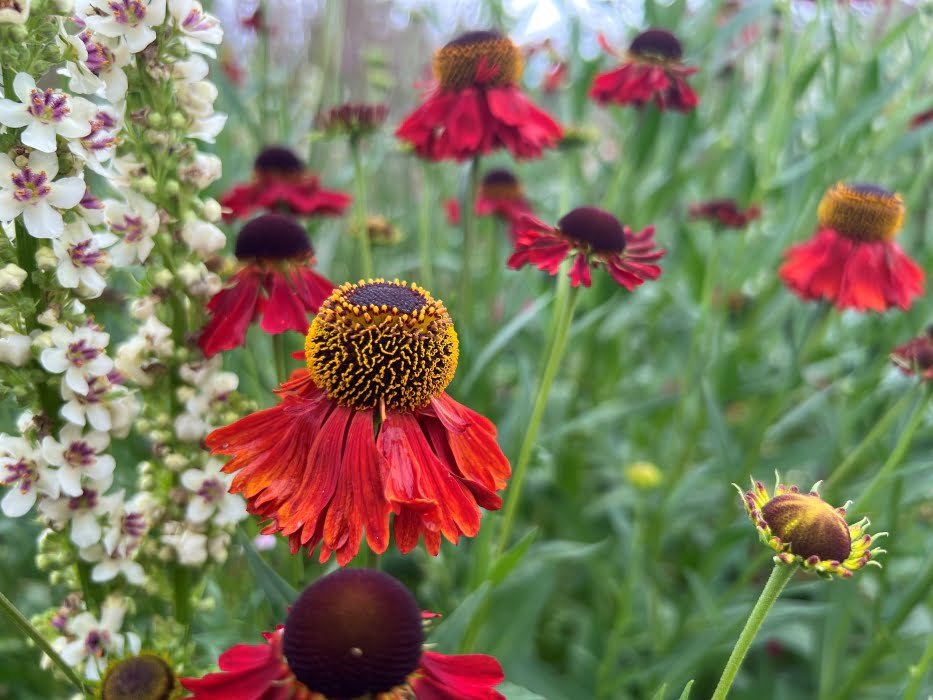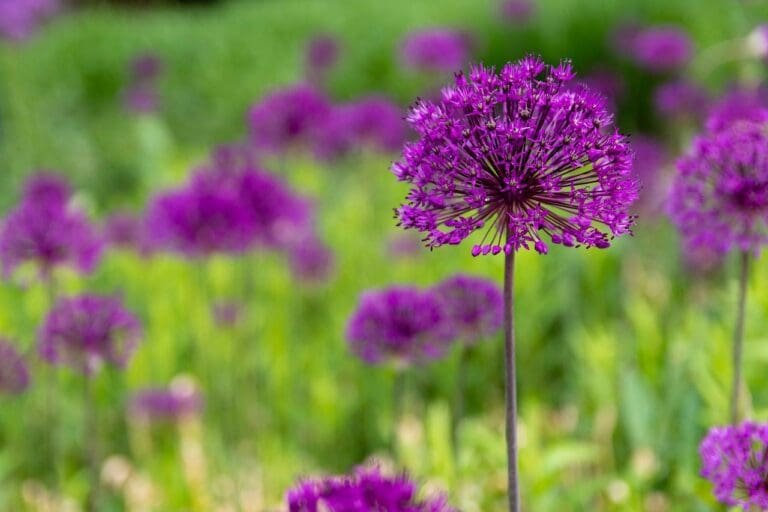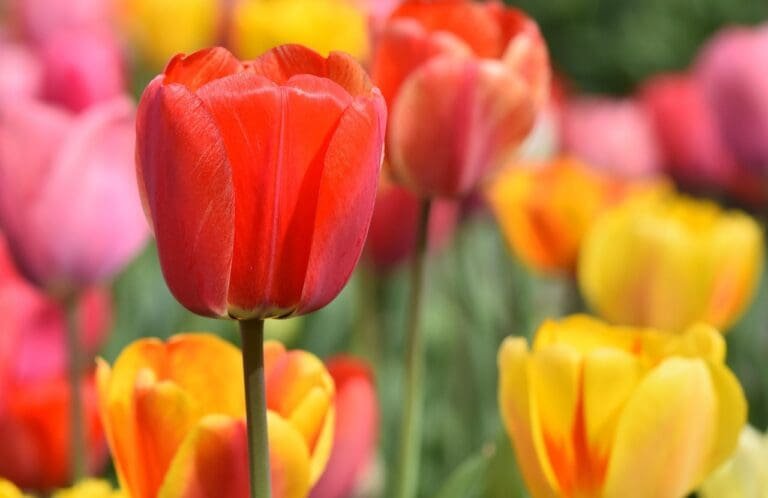Designing a garden that looks captivating all year round is a dream for many garden enthusiasts. June is a particularly magical month when the garden transitions into summer, and a new palette of colours and textures emerge.
Here’s a closer look at ten beautiful plants that bloom in June, to help you cultivate a garden that’s vibrant throughout the year.
Top Tip
When planning for year-round interest, consider the flowering times, colours, and heights of plants to create a harmonious and dynamic garden.
This post contains affiliate links which means we may make commission from any qualifying sales with no extra cost to yourself.
10 Plants in Bloom in June in the UK:
- Lupins
- Heleniums
- Sweet Peas
- Nepeta
- Geranium
- Meconopsis
- Sanguisorba
- Clematis
- Delphinium
- Astilbe
1. Lupins (Lupinus)
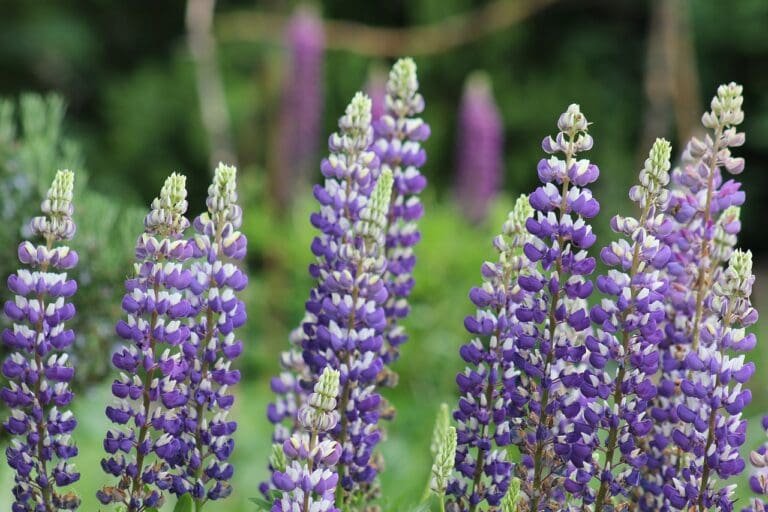
Lupins are known for their tall, spiky racemes filled with flowers in shades of blue, pink, red, white, and yellow. These perennials can add a vertical touch to your garden.
Growing Conditions: They prefer full sun to partial shade and well-drained soil. Watering during dry periods and deadheading can prolong the blooming period.
2. Heleniums (Helenium)

Heleniums boast daisy-like flowers with warm hues, often with a contrasting central cone. Their vibrant appearance can light up any garden.
Growing Conditions: Plant them in full sun in well-drained soil. Taller varieties might need staking.
3. Sweet Peas (Lathyrus odoratus)
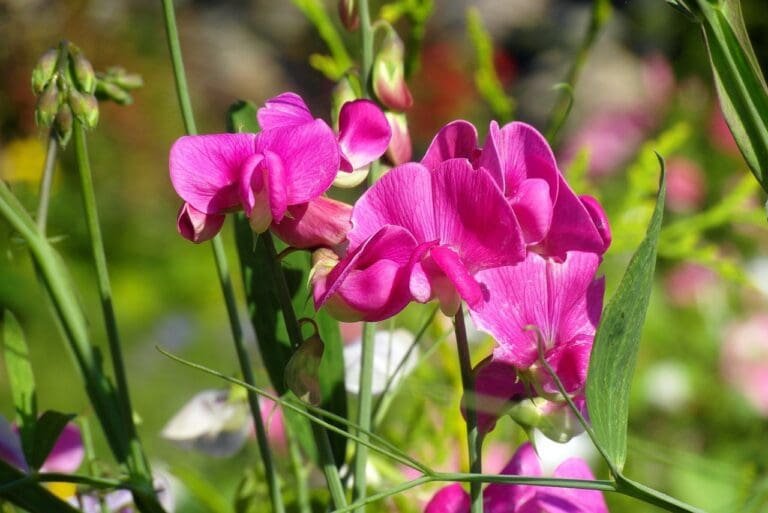
Sweet Peas are annual climbing plants with fragrant, delicate flowers. Their charming blossoms are often used in floral arrangements.
Growing Conditions: Provide full sun, fertile, well-drained soil, and a structure to climb on. Regular picking encourages further blooming.
4. Nepeta (Nepeta faassenii)
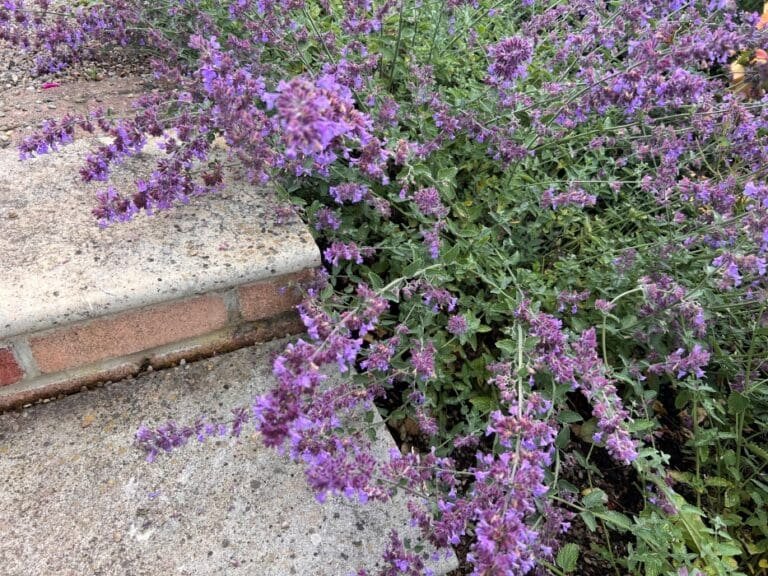
Nepeta, also known as Catmint, provides an extended flowering period with its blue or violet flowers. The grey-green foliage complements the soft flower shades.
Growing Conditions: Full sun to partial shade and well-drained soil. Trim after the first bloom for a second flush.
5. Geranium (Pelargonium)
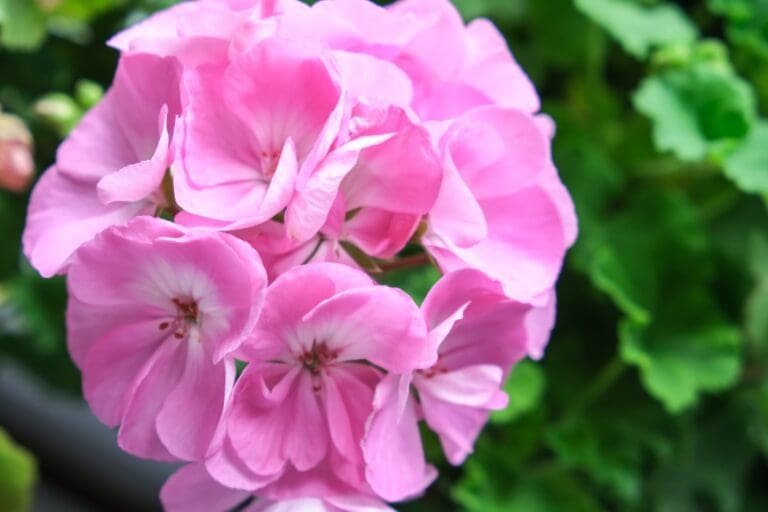
Geraniums come in various species, offering flowers in many shades. They can grow in beds, containers, and even as houseplants.
Growing Conditions: Full sun to partial shade with well-drained soil. Regular deadheading encourages more blooms.
6. Himalayan Poppy (Meconopsis)
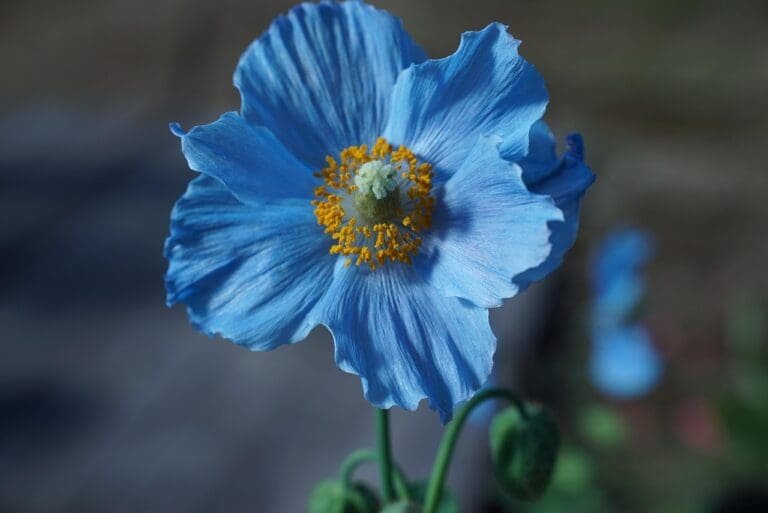
The elusive blue Himalayan Poppy, Meconopsis, stands out with its large, blue, paper-thin petals. It’s an exotic addition to any garden.
Growing Conditions: Partial shade with moist, acidic, well-drained soil. Patience and attentive care are required.
7. Sanguisorba
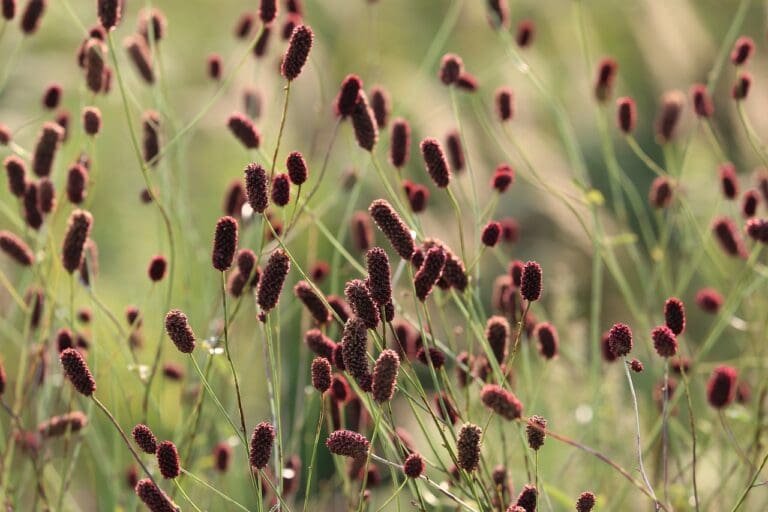
Sanguisorba adds an architectural element with its unique, bottlebrush-like flowers in shades of red or pink.
Growing Conditions: Full sun to partial shade and moderately fertile, well-drained soil. Trim back after flowering to maintain shape.
8. Clematis
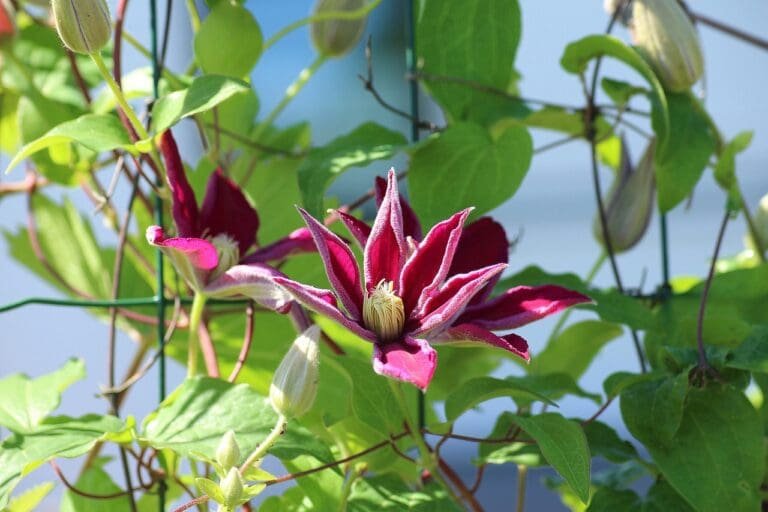
Clematis is a versatile climber with large, showy flowers in various colours, adding vertical interest to fences, pergolas and trellises.
Growing Conditions: Sun or partial shade. Keep the base and roots shaded, and the shoots in the sun.
9. Delphinium
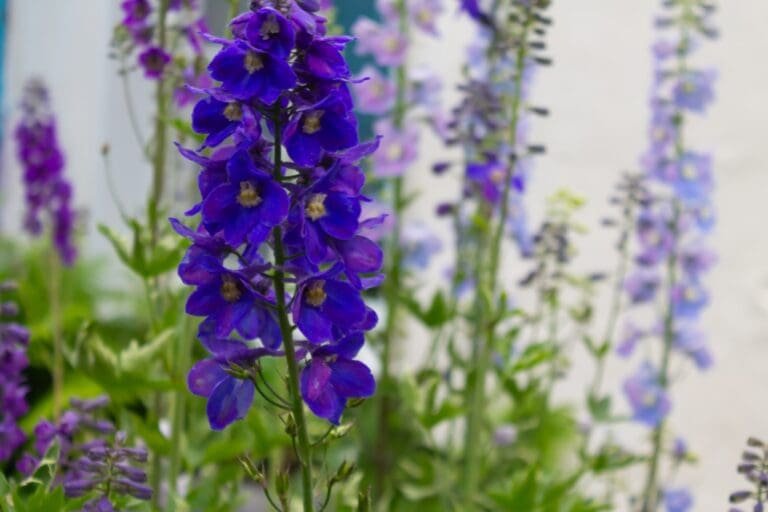
Delphiniums are famous for their tall spikes filled with blue, purple, pink, or white flowers, adding elegance and height to borders.
Growing Conditions: Full sun, rich, well-drained soil. Staking is often necessary.
10. Astilbe
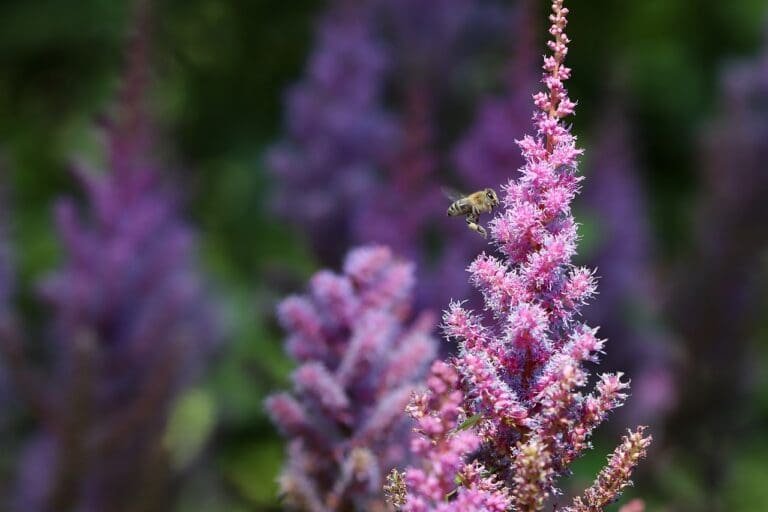
Astilbe’s feathery, plume-like flowers bring texture and colour to shady areas. Their graceful, fern-like foliage remains attractive even after blooming.
Growing Conditions: Partial to full shade, moist, well-drained soil. Mulch to keep soil moist.
Final thoughts
Designing a year-round garden is an art that goes beyond choosing flowering plants. By considering the right mix of seasonal bloomers and incorporating evergreens into your planting scheme, you can create a garden with year-round structure and interest.
Evergreen elements not only add life during the dormant winter months but also provide a constant backdrop that highlights the vibrant colours and textures that emerge throughout the year.
Frequently Asked Questions
Q: What annuals flower in June in the UK?
Many annuals bloom in June in the UK, including Sweet Peas, Marigolds, Petunias, and Geraniums. They can provide bright and continuous colour throughout the summer months.
Q: Are dahlias flowering in June?
A: Dahlias typically start to bloom in late June in the UK and continue through the summer and into the autumn. They come in a dazzling array of colours and forms, offering plenty of choices for the garden.
Q: Can you get peonies at the end of June?
Peonies generally bloom from late May to early June in the UK. Depending on the specific variety and local climate, some late-blooming peonies may still be flowering at the end of June, but it’s less common.

